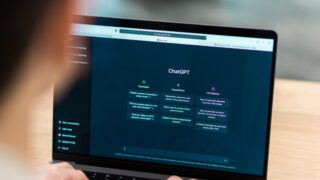What is Headcount Reporting? A Complete Guide for Employers

Headcount reporting is a critical aspect of workforce management that helps organizations maintain a clear understanding of their staffing levels and resource allocation. It provides a comprehensive view of the number of employees within a company, segmented by various categories such as department, job function, location, and employment status. This data enables employers to make strategic decisions around hiring, budgeting, and workforce planning.
This article serves as a complete guide to headcount reporting, covering its definition, importance, and best practices. We’ll delve into how it helps optimize HR operations, streamline workforce planning, and support compliance requirements.
What is Headcount Reporting?
Headcount reporting is the process of tracking and analyzing the number of employees within an organization at a given point in time. It involves collecting and categorizing data related to employee demographics, such as full-time or part-time status, contractor roles, and temporary workers. The report typically includes:
- Total Number of Employees: The overall count of employees, regardless of position or location.
- Employee Distribution: A breakdown by department, job title, location, and employment type.
- Demographic Information: Data on employee age, gender, tenure, and other attributes.
- Turnover Rates: Insights into the rate at which employees join and leave the organization.
The purpose of headcount reporting is to offer a clear picture of an organization’s current workforce composition and to track changes over time. This is crucial for strategic decision-making in areas like staffing, budgeting, and operational planning.
Importance of Headcount Reporting
Headcount reporting is a critical tool that provides employers with valuable insights into workforce management, staffing levels, and organizational structure. Having a clear understanding of headcount data enables companies to make informed decisions in areas like budgeting, recruitment, and strategic planning. Below are some of the key reasons why headcount reporting is important for any organization:
1. Effective Workforce Planning
Headcount reporting is essential for strategic workforce planning. By keeping track of the number of employees and their roles within the organization, employers can anticipate future staffing needs, plan for growth, and manage internal mobility. This ensures the business has the right mix of talent to support its objectives and can quickly identify gaps that need to be filled through recruitment or upskilling.
With a detailed headcount report, HR teams can forecast hiring needs, manage team expansions or contractions, and ensure that each department has the optimal number of employees. This strategic approach minimizes overstaffing or understaffing, which can lead to higher operational costs or productivity issues.
2. Budgeting and Cost Management
Labor costs are typically the largest expense for most businesses. Headcount reporting helps organizations monitor these costs more effectively by providing an accurate picture of current staffing levels and associated expenses. It allows HR and finance teams to assess the cost impact of each employee category, including full-time, part-time, and contingent workers.
By understanding the total number of employees and their distribution across departments or locations, companies can allocate budgets more efficiently, make adjustments where necessary, and avoid overspending. This is particularly useful during budget planning cycles or when assessing the financial feasibility of hiring initiatives.
3. Improving Employee Productivity
Headcount reporting can highlight areas where employee-to-work ratios are unbalanced. For example, if a particular team is understaffed, it can lead to burnout and decreased productivity among existing employees. Conversely, overstaffing can lead to underutilization of talent, which can be a financial drain and affect employee morale.
With accurate headcount data, managers can ensure teams are sized appropriately to workload demands. This enables them to optimize resource allocation, redistribute tasks where needed, and maintain a high level of productivity across the organization.
4. Supporting Organizational Structure Analysis
Headcount reporting offers insights into the organizational structure, showing how resources are distributed across different business units, departments, and locations. This is crucial for understanding the hierarchy and team dynamics within the company. It allows leaders to evaluate whether the current structure supports business goals and make adjustments as necessary.
Additionally, by analyzing the headcount distribution by role or function, employers can assess whether key business areas are adequately staffed and whether leadership layers are balanced. This supports informed decisions around restructuring, merging teams, or creating new roles.
5. Compliance and Legal Reporting
Certain industries are subject to regulatory requirements that mandate accurate headcount reporting, especially when it comes to employee demographics. For example, companies may need to report data related to gender diversity, minority representation, and employment status for compliance purposes. Maintaining accurate headcount reports helps ensure compliance with labor laws and avoids potential penalties.
In addition, headcount data is often required for government reporting, such as the U.S. Equal Employment Opportunity (EEO) reports or Occupational Safety and Health Administration (OSHA) filings. Having reliable and up-to-date headcount data ensures that the organization can respond promptly to audit requests and demonstrate compliance.
6. Turnover and Retention Analysis
Tracking headcount over time helps organizations monitor employee turnover rates and identify patterns or trends. High turnover can be an indicator of underlying issues such as poor management, inadequate compensation, or lack of career growth opportunities. By analyzing headcount reports alongside turnover metrics, HR teams can gain valuable insights into retention challenges and develop strategies to improve employee satisfaction.
Understanding why employees leave and the impact on headcount helps employers take proactive steps to reduce attrition, such as implementing employee engagement programs, revising compensation packages, or enhancing career development opportunities.
7. Strategic Decision-Making
Headcount reporting is a foundational element of strategic decision-making for leadership teams. It provides data-driven insights that support a range of business decisions, from staffing and resource allocation to expansion and downsizing. By analyzing headcount trends, organizations can identify when to scale up or down, reallocate resources, or shift focus to different areas of the business.
For example, if a headcount report shows a growing number of vacancies in a critical department, leadership may decide to prioritize recruitment for that area or explore alternative staffing solutions such as outsourcing. Accurate headcount data helps ensure that strategic decisions are based on real-time information, reducing the risk of costly mistakes.
8. Enhancing Diversity and Inclusion (D&I) Efforts
Diversity and inclusion are major priorities for many organizations. Headcount reporting plays a key role in monitoring D&I metrics, such as gender distribution, age diversity, and the representation of minority groups. By tracking these metrics, companies can evaluate the effectiveness of their D&I initiatives and identify areas for improvement.
For example, if headcount reports reveal a lack of diversity in senior management positions, leadership can take targeted actions to promote diversity through internal development programs or diverse hiring practices. This data-driven approach supports a more inclusive workplace and helps organizations meet their diversity goals.
9. Optimizing Use of Contingent Workers
Many organizations rely on a mix of full-time employees, part-time staff, and contingent workers (such as freelancers, contractors, and temporary staff). Headcount reporting helps companies track the utilization of these different worker categories and assess whether the current workforce composition is meeting business needs.
For example, if headcount data shows a high reliance on temporary workers in a particular function, it may indicate the need to hire more full-time employees. Alternatively, if certain projects require specialized skills, contingent workers may be a more cost-effective solution. Understanding the breakdown of the workforce enables HR teams to make informed decisions about hiring versus outsourcing.
10. Managing Organizational Change
Whether the company is going through a merger, acquisition, or restructuring, headcount reporting is essential for managing organizational change. It helps leadership assess the impact of these changes on the workforce, identify potential redundancies, and plan for smooth transitions.
During a merger or acquisition, for instance, headcount data can reveal overlaps in roles and responsibilities, enabling leadership to make data-driven decisions about consolidating positions or reassigning employees. Accurate headcount reporting ensures that change management initiatives are executed efficiently and with minimal disruption to the business.
Components of a Headcount Report
To create an effective headcount report, employers must consider various components and ensure that the report aligns with the company’s needs. Below are the primary elements that should be included:
- Total Headcount by Category: An overall count segmented by full-time, part-time, temporary, and contractor employees.
- Employee Demographics: Include details such as age, gender, tenure, and location to gain insights into diversity and the workforce structure.
- Departmental Breakdown: Highlight headcount per department, job function, or division to understand staffing levels and identify potential gaps.
- Hiring & Attrition Rates: Track the number of hires and separations to monitor turnover and gauge employee satisfaction.
- Headcount by Tenure: Categorize employees based on the length of service (e.g., 0-1 years, 2-5 years, etc.) to evaluate retention strategies and succession planning.
- Overtime & Contractor Usage: Identify the use of contractors and the frequency of overtime work to assess whether staffing is sufficient to meet operational demands.
Types of Headcount Reports
Headcount reporting isn’t a one-size-fits-all approach. Depending on the organization’s needs, various types of headcount reports can provide different levels of insights, catering to specific aspects of workforce management and strategic planning. Each type of headcount report serves a unique purpose, helping employers gain a deeper understanding of their workforce composition and optimize staffing strategies.
Below are the primary types of headcount reports that organizations use:
1. Current Headcount Report
A Current Headcount Report is the most basic form of headcount reporting. It provides a snapshot of the number of employees at a given point in time. Typically, this report includes employee details such as name, role, department, location, and employment status (e.g., full-time, part-time, contractor). It is useful for maintaining an up-to-date view of the workforce and is often the foundation for more complex reports.
Key Use Cases:
- Quick view of the total number of employees.
- Monitoring the distribution of employees across departments or locations.
- Planning for staffing adjustments or departmental changes.
Common Metrics:
- Total headcount by department.
- Total headcount by location.
- Employee status (active, on leave, etc.).
2. Headcount Growth Report
A Headcount Growth Report tracks changes in headcount over a specific period, providing insights into how the organization’s workforce has expanded or contracted. It highlights hiring trends, attrition rates, and overall workforce growth, helping businesses understand whether their staffing strategies are aligned with business objectives.
Key Use Cases:
- Analyzing headcount growth trends over time.
- Assessing the effectiveness of recruitment strategies.
- Understanding seasonal or project-based staffing changes.
Common Metrics:
- Monthly or quarterly headcount growth.
- New hires vs. terminations.
- Growth rate by department or location.
3. Attrition and Turnover Report
An Attrition and Turnover Report focuses on employees who have left the organization, whether through resignation, retirement, or termination. This report helps identify trends in employee departures, which can indicate issues such as low employee satisfaction, ineffective management, or poor work culture.
Key Use Cases:
- Understanding reasons for employee turnover.
- Identifying departments with high attrition rates.
- Developing retention strategies.
Common Metrics:
- Turnover rate (overall and by department).
- Voluntary vs. involuntary turnover.
- Average employee tenure.
4. Diversity and Inclusion (D&I) Report
A Diversity and Inclusion Report provides detailed insights into the demographic makeup of the workforce, including factors such as gender, age, ethnicity, disability status, and veteran status. These reports are crucial for organizations focusing on diversity, equity, and inclusion (DEI) initiatives.
Key Use Cases:
- Tracking progress toward diversity goals.
- Identifying underrepresented groups within the organization.
- Supporting compliance with Equal Employment Opportunity (EEO) requirements.
Common Metrics:
- Gender distribution.
- Ethnic diversity by department or role.
- Age distribution.
5. Organizational Structure Report
An Organizational Structure Report visualizes the hierarchy within the company, showing reporting lines, management structures, and departmental compositions. This type of report is often presented as an organizational chart and is essential for understanding leadership layers and team dynamics.
Key Use Cases:
- Visualizing reporting structures and leadership distribution.
- Identifying opportunities for restructuring or realignment.
- Understanding managerial spans of control.
Common Metrics:
- Number of direct reports per manager.
- Management layers within the organization.
- Average team size by department.
6. Budget and Cost Analysis Report
A Budget and Cost Analysis Report focuses on the financial aspect of headcount, providing insights into labor costs, salaries, benefits, and overall staffing expenses. This report helps organizations manage their workforce budget more effectively and align headcount with financial goals.
Key Use Cases:
- Assessing labor costs by department or location.
- Evaluating the cost-effectiveness of staffing strategies.
- Supporting budget planning and forecasting.
Common Metrics:
- Average salary by role or department.
- Total labor cost by business unit.
- Cost per hire and benefits distribution.
7. Vacancy Report
A Vacancy Report provides an overview of open positions within the organization, including details such as the role, department, time open, and recruitment status. This report helps HR teams prioritize recruitment efforts and provides insights into potential understaffing issues.
Key Use Cases:
- Prioritizing recruitment activities.
- Identifying departments with high vacancy rates.
- Managing the impact of vacancies on business operations.
Common Metrics:
- Number of open positions by department.
- Average time to fill.
- Positions with long-term vacancies.
8. Headcount by Employment Type Report
This report categorizes employees based on their employment type, such as full-time, part-time, contractor, temporary, or seasonal. It provides a detailed breakdown of workforce composition and helps organizations manage their contingent workforce more effectively.
Key Use Cases:
- Analyzing the use of contingent workers.
- Managing workforce flexibility and project staffing.
- Planning for seasonal workforce needs.
Common Metrics:
- Headcount by employment type.
- Contractor vs. full-time employee ratio.
- Seasonal employee distribution.
9. Location-Based Headcount Report
A Location-Based Headcount Report focuses on employee distribution across various geographic locations, including offices, regions, or countries. This type of report is essential for global or multi-site organizations that need to manage staffing across different locations.
Key Use Cases:
- Analyzing headcount by geographic location.
- Managing remote and in-office workforce distribution.
- Supporting location-based workforce planning.
Common Metrics:
- Headcount by city, state, or country.
- Remote vs. on-site employee ratio.
- Location-specific growth trends.
10. Skills and Competency Report
A Skills and Competency Report provides a detailed overview of the skills and qualifications present within the workforce. This report helps identify skill gaps, support training and development initiatives, and align the workforce’s competencies with business needs.
Key Use Cases:
- Identifying skill gaps within the organization.
- Planning for upskilling or reskilling initiatives.
- Supporting talent development and succession planning.
Common Metrics:
- Skill distribution by department or role.
- Critical skill gaps by business unit.
- Competency levels across the workforce.
11. Departmental Headcount Report
A Departmental Headcount Report breaks down headcount by department, providing insights into how resources are allocated within different areas of the business. This report is useful for departmental planning and ensuring each unit has the right staffing levels to achieve its objectives.
Key Use Cases:
- Analyzing headcount distribution by department.
- Monitoring resource allocation and team size.
- Supporting departmental budget planning.
Common Metrics:
- Headcount by department.
- Departmental growth trends.
- Cross-departmental employee movement.
Creating an Effective Headcount Report
Creating an effective headcount report involves several steps, from data collection to analysis and presentation. Here’s a step-by-step guide:
Step 1: Define the Scope and Purpose
Identify the specific goals of the report. Are you looking to analyze staffing levels across departments, monitor compliance, or assess workforce diversity? Clearly defining the purpose will help determine the metrics to include.
Step 2: Collect Accurate Data
Ensure that data is collected from reliable sources, such as HR databases, payroll systems, and attendance records. It’s crucial to verify the accuracy and completeness of data to avoid discrepancies in the report.
Step 3: Segment the Workforce
Segment employees based on relevant categories such as employment type, department, tenure, and location. This helps in providing a more granular view of the workforce composition.
Step 4: Choose the Right Format
Select a format that suits the needs of the audience. For example, a visual dashboard with charts and graphs is ideal for presenting to leadership, while a detailed spreadsheet may be better for internal HR analysis.
Step 5: Analyze and Interpret the Data
Go beyond the numbers—look for trends, anomalies, and insights. For example, if turnover is high in a particular department, it may indicate management issues or low employee satisfaction.
Step 6: Present the Findings
Use clear visuals such as charts, tables, and graphs to make the data easy to understand. Highlight key findings and include actionable recommendations where applicable.
Best Practices for Headcount Reporting
Implementing headcount reporting requires following certain best practices to ensure the process is smooth and yields actionable insights:
- Regular Updates: Conduct headcount reporting at regular intervals (e.g., monthly, quarterly) to keep data up-to-date and relevant.
- Leverage Technology: Use HR software or specialized reporting tools to automate data collection, segmentation, and visualization. This reduces the risk of manual errors and enhances efficiency.
- Ensure Data Accuracy: Inaccurate data can lead to flawed insights. Establish strict data validation processes to ensure consistency and reliability.
- Consider Compliance Requirements: Make sure your headcount report meets legal and regulatory standards, especially in industries with strict reporting requirements.
- Maintain Confidentiality: When handling sensitive employee data, implement appropriate security measures to protect privacy and ensure compliance with data protection regulations.
Challenges in Headcount Reporting
While headcount reporting offers numerous benefits, it can also present certain challenges, including:
- Data Integration: Organizations often use multiple systems for HR, payroll, and attendance, making it difficult to consolidate data into a single, comprehensive report.
- Maintaining Data Accuracy: Errors in data collection or entry can lead to inaccurate reports, affecting decision-making.
- Complexity in Large Organizations: For multinational companies or those with a large number of employees, creating detailed headcount reports can be complex and time-consuming.
- Change Management: Employee numbers and statuses can change frequently due to promotions, transfers, or terminations. Keeping the report current requires regular updates and meticulous tracking.
How Technology Enhances Headcount Reporting
Advancements in HR technology have significantly improved the process of headcount reporting. Modern HR tools offer features like automated data collection, real-time analytics, and customizable dashboards. Key benefits include:
- Automation: Automates repetitive tasks such as data entry, reducing the likelihood of human error.
- Real-Time Data Access: Provides up-to-date information, enabling quick responses to staffing changes or issues.
- Customizable Reports: Allows HR teams to create tailored reports for different audiences, such as senior management or department heads.
- Predictive Analytics: Some tools use AI to analyze headcount trends and provide forecasts, helping with strategic workforce planning.
Using Headcount Reports for Strategic Planning
Headcount reporting is not just an administrative task—it’s a strategic tool that can shape the future of your organization. Here are a few ways to leverage headcount reports for strategic planning:
- Identifying Talent Gaps: Use headcount reports to spot talent shortages and address them proactively with targeted hiring strategies.
- Enhancing Employee Retention: Analyze turnover trends to identify factors contributing to employee attrition and develop retention programs accordingly.
- Optimizing Workforce Allocation: Review headcount distribution to ensure the right mix of skills across departments, reducing the need for overtime or temporary staffing.
- Budget Planning & Cost Management: Use headcount data to align staffing levels with business objectives, ensuring that labor costs are optimized without compromising productivity.
Conclusion
Headcount reporting is an invaluable tool for employers, providing a clear picture of workforce composition, tracking staffing trends, and supporting strategic decision-making. With accurate and up-to-date headcount data, companies can optimize workforce planning, enhance productivity, and maintain compliance with regulatory requirements.
By understanding the importance of headcount reporting and following best practices, organizations can leverage these insights to build a stronger, more efficient workforce that aligns with their business goals. Implementing advanced HR technology further enhances the accuracy and effectiveness of headcount reporting, making it easier for employers to stay agile and responsive in a dynamic business environment.




